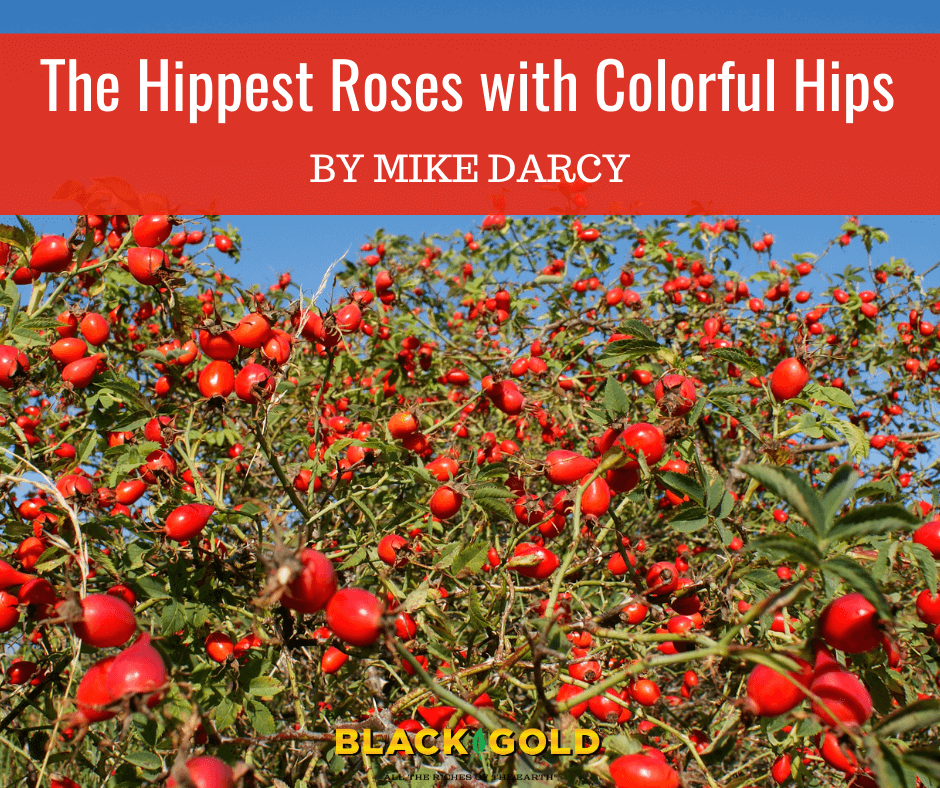
Generally, when gardeners purchase roses, they think of flower color, fragrance, disease resistance, and the overall beauty of the plant. Whether a rose has hips is usually not a high priority. But, if our gardens can have blooming roses all summer, why not end the season with the added bonus of colorful hips in fall? Songbirds and other wildlife love them, and they are beautiful. Some can even be dried to flavor delicious herbal tea.
What Are Rose Hips?
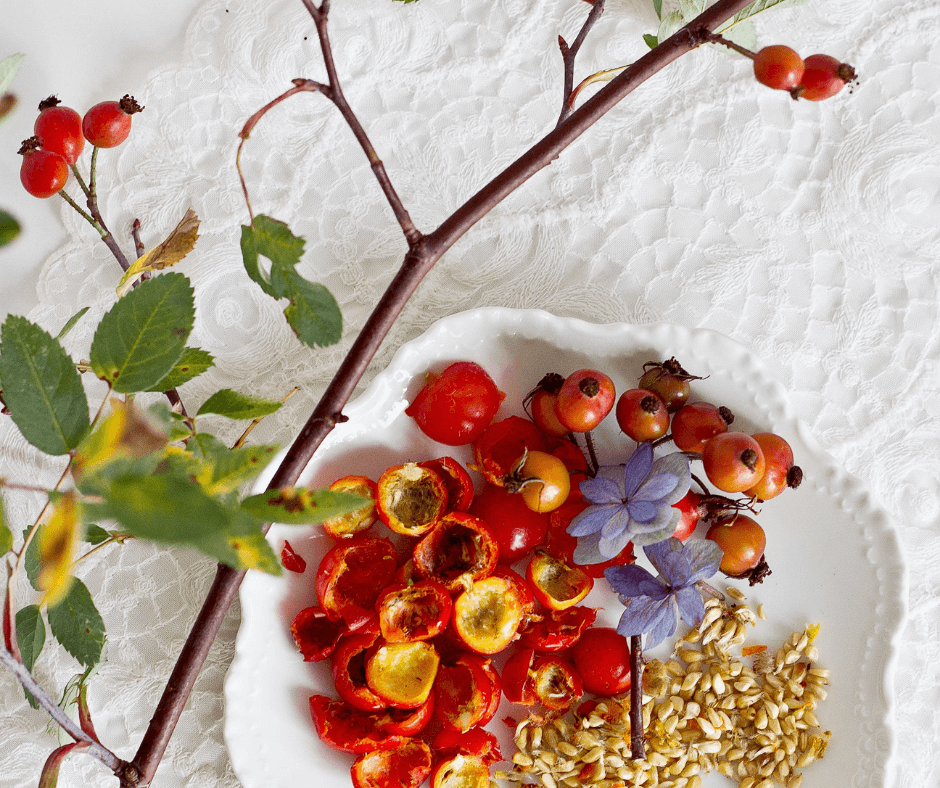
Rose hips are simply ripened rose fruits. They are often brightly colored and appear most abundantly in the fall at the end of the bloom cycle. They are usually red or orange but can also be bright yellow and even reddish-black.
Rose hips have been used for centuries for folk medicine and tea. In fact, they are still in use today–largely because they are tart and very high in vitamin C. Check out the health section of your local grocery store, and you will probably find rosehip teas, soaps, and lotions. Their high concentration of vitamin C has even helped nations during the toughest times. During World War II in England, the public was encouraged to harvest rose hips. Vitamin C was in short supply due to limitations on importation of fruits, such as citrus, so hips were gathered and processed into a syrup that could be used at home and was even made available in stores.
Unfortunately, for most gardeners, modern roses are not known for their hips. With current rose breeding methods, a rose with hips has not been a priority. For marketing purposes, long stems, improved flowering, and disease resistance have been more important. That’s why many heirloom and species (non-hybrid) roses will often provide the most impressive display of hips. I will focus more on heirloom roses, and a couple of newer varieties, because species roses are usually once-blooming and tend to have more rampant growth habits that are often more difficult to control, thus making them unsuitable for most gardens due to space considerations.
Roses With Beautiful Hips
Here are some roses that are known for hips and would fit into most gardens. All are commercially available.
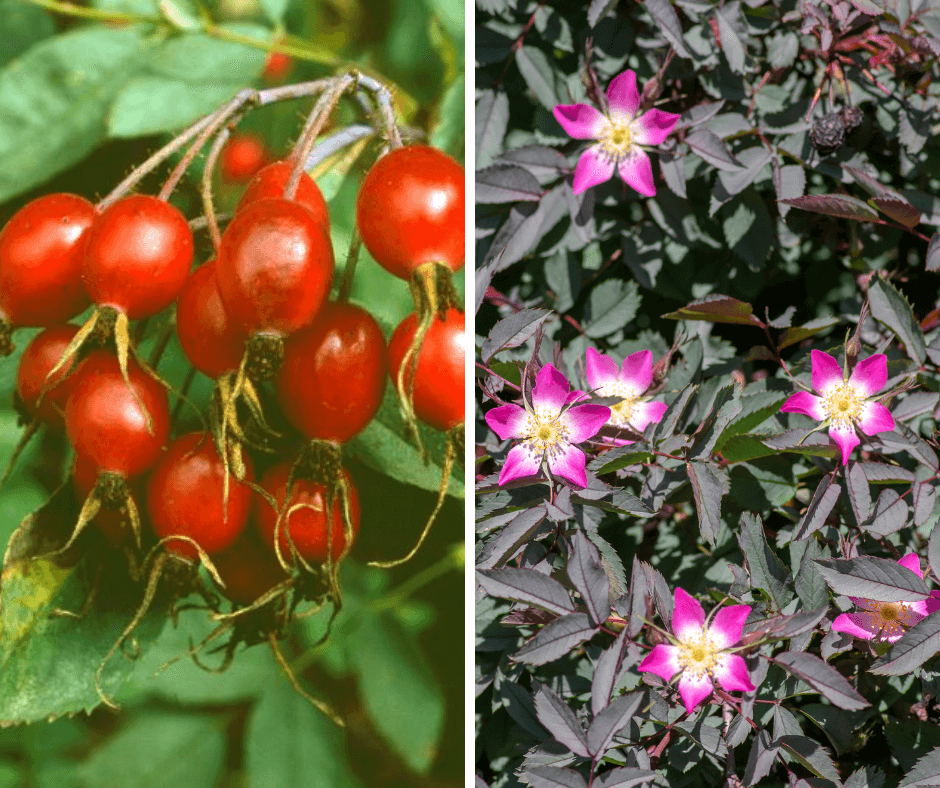
European Redleaf Rose (Rosa glauca, USDA Hardiness Zone 2-8): In my own garden, I have one species rose, Rosa glauca. While it does grow quite large (5 to 7 feet), I keep it pruned to a manageable size. Rosa glauca is a particular favorite of mine because I like the foliage, which is purplish-red with grayish-silver overtones that make it quite an attractive shrub, even when not in flower. It blooms once a season in spring, and the flowers are single pink with white centers and lots of yellow stamens. Even though it is a one-time bloomer, the bloom season extends over about a six-week period. Clusters of very colorful red hips occur in the fall.
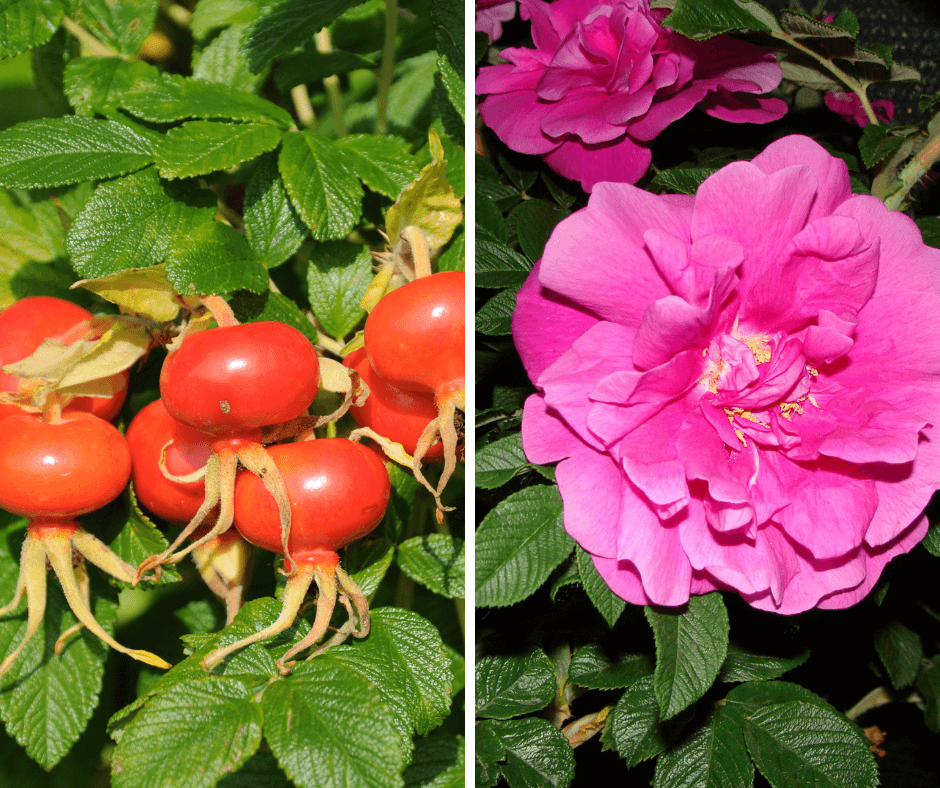
Japanese Beach Rose (Rosa rugosa, Zones 2-7): Here is a rugged, tough rose that is easy to grow. I like ‘Alba‘, which becomes covered with single white flowers in late spring and early summer. Another good selection is the double-pink ‘Hansa’, which is very fragrant and blooms through most of the summer and is a fairly compact grower (4 to 5 feet) suitable for smaller gardens. These roses are known for their large, juicy, crabapple-sized hips that turn shades of red and orange in fall. The mature hips are also edible and can be dried to flavor herbal tea or used to make tart jam
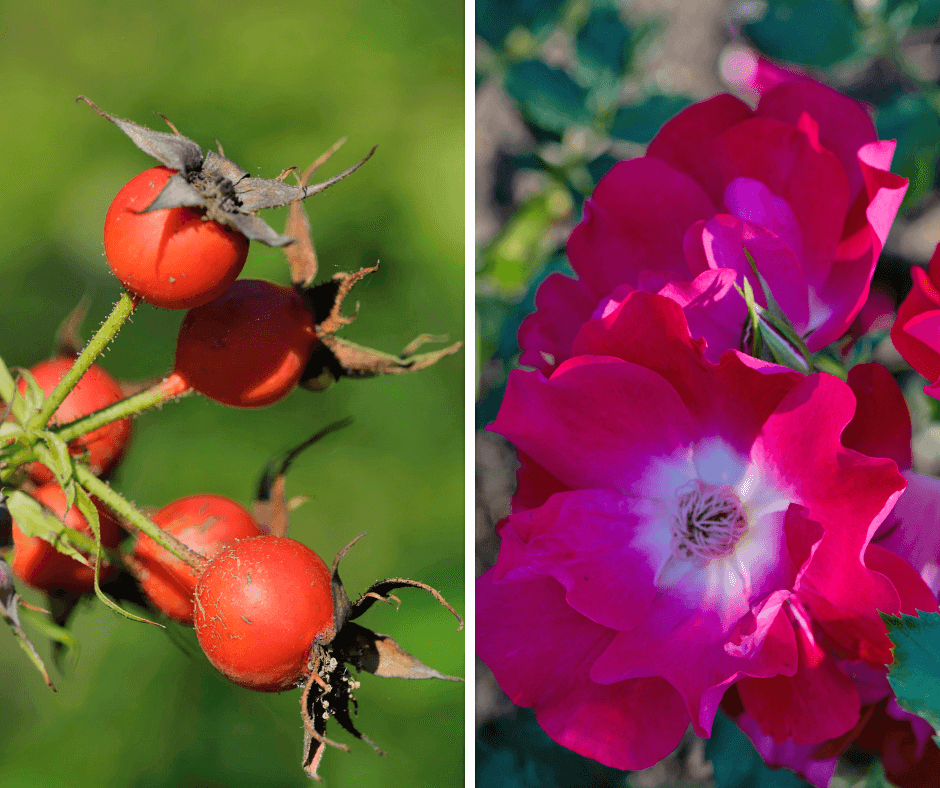
Dortmund Climbing Rose (Rosa ‘Dortmund’, Zones 5-9): A climbing rose with very prolific orange-red hips in fall is ‘Dortmund’, which was first introduced in 1955. The single-red flowers appear in copious clusters that bloom over a long period of time. Its dark green, glossy foliage is disease resistant. It is a fast and tall grower, reaching 8 to 11 feet, so give it plenty of support and train it well.
Westerland™ Climbing Rose (Rosa Westerland™, Zones 5-10): Lots of large, fragrant, double roses of peachy orange cover this repeat bloomer from late spring through the season. The foliage is glossy green and quite disease resistant and the hips are round and bright orange. ‘Westerland’ is a 1999 introduction with elongated canes of 6 feet or more. Sometimes it is called a shrub, but it is too long and leggy (that would be a large shrub!).
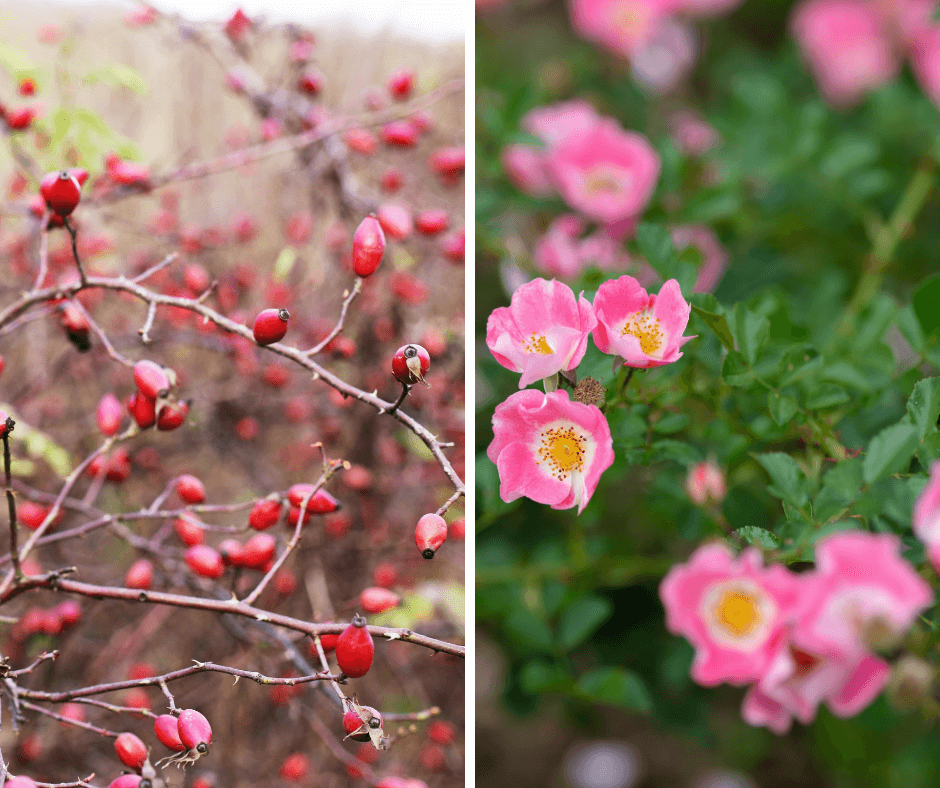
Pink Meidiland Shrub Rose (Rosa Pink Meidiland, Zones 4-9) is a 4-to-5-foot shrub rose that has many small, bright pink flowers with white centers. It blooms in flushes throughout the season. Its orange-red fall hips are small, but they are numerous. Another comparable Meidiland rose that is a bit more common in commerce and has improved pink flowers, excellent fragrance, and lots of hips is Magic Meidiland, but I prefer the delicate blooms of the original pink.
If you are considering getting a rose or roses that will produce hips in the fall, I would suggest doing some research for your specific region. Check with rose-growing neighbors as well as a local garden center or a public rose garden, if your city has one. I think it is best to actually see the plant and this time of year; the hips should be visible now. This way you know you are getting exactly what you want.
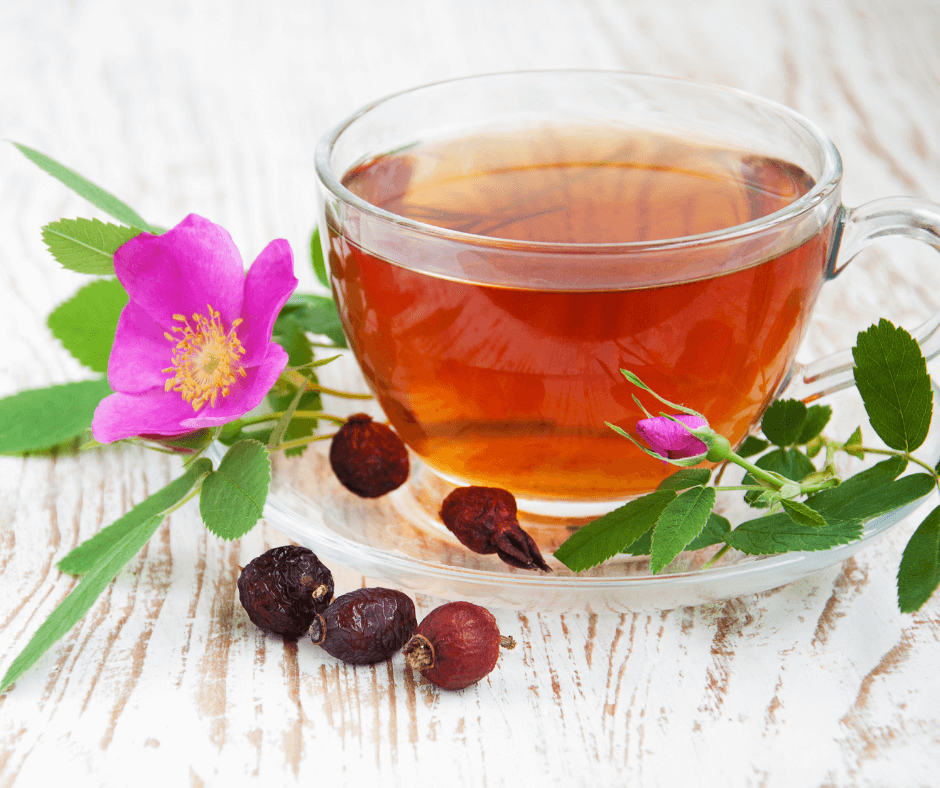
For tips on how to grow and plant roses, please reach the following garden blogs: A to Z of Natural & Organic Rose Care and What Light and Soil are best for Roses?

